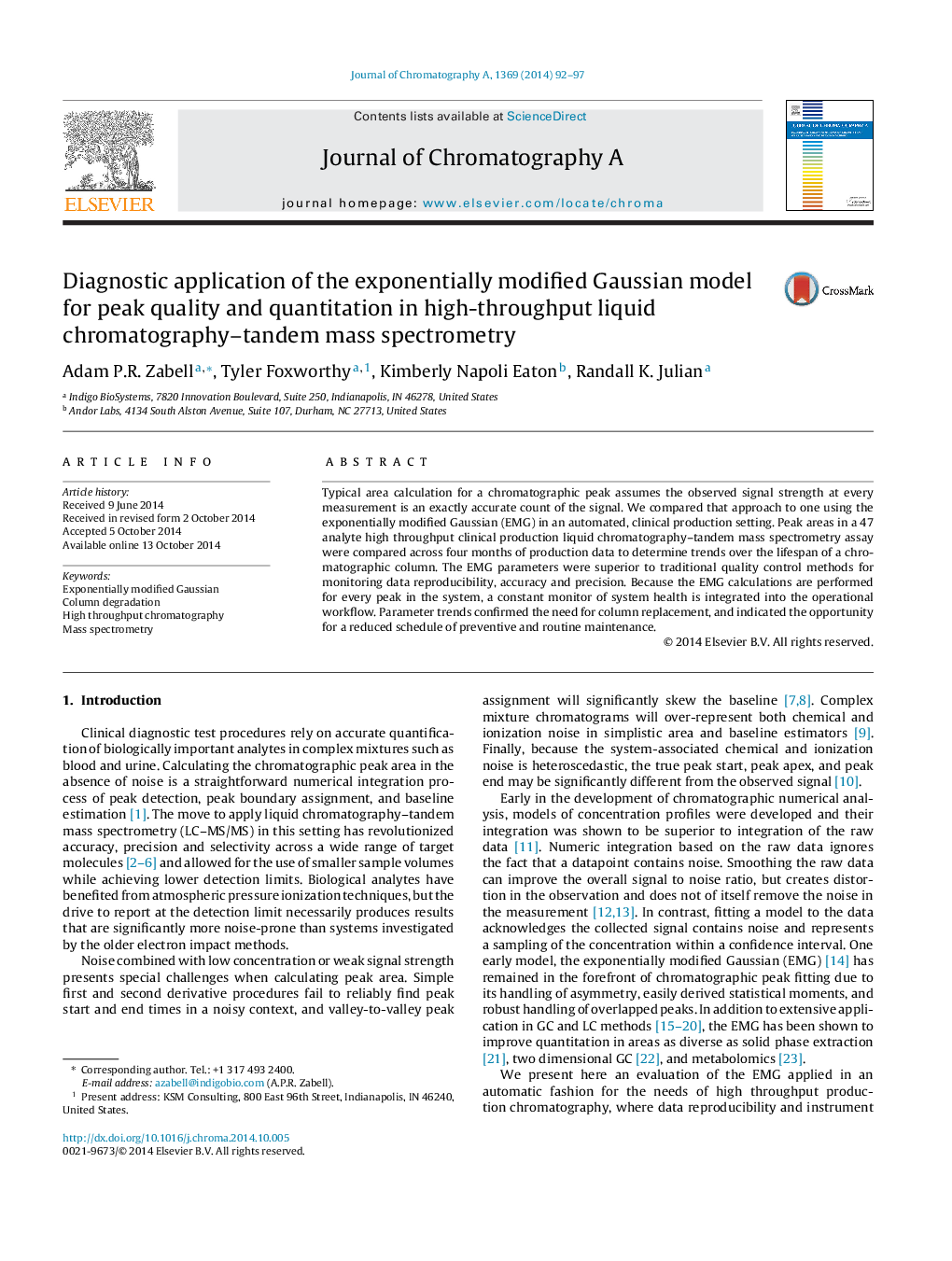| Article ID | Journal | Published Year | Pages | File Type |
|---|---|---|---|---|
| 1199671 | Journal of Chromatography A | 2014 | 6 Pages |
•Peak areas calculated with standard and with EMG methods.•Peak areas compared across four months of production data to observe column trends.•Peaks show a 20% bias to smaller area when using standard tools.•EMG has a better coefficient of variance, reducing the need for manual adjustment.•EMG parameters, but not peak areas, reveal a discontinuity at column failure.
Typical area calculation for a chromatographic peak assumes the observed signal strength at every measurement is an exactly accurate count of the signal. We compared that approach to one using the exponentially modified Gaussian (EMG) in an automated, clinical production setting. Peak areas in a 47 analyte high throughput clinical production liquid chromatography–tandem mass spectrometry assay were compared across four months of production data to determine trends over the lifespan of a chromatographic column. The EMG parameters were superior to traditional quality control methods for monitoring data reproducibility, accuracy and precision. Because the EMG calculations are performed for every peak in the system, a constant monitor of system health is integrated into the operational workflow. Parameter trends confirmed the need for column replacement, and indicated the opportunity for a reduced schedule of preventive and routine maintenance.
